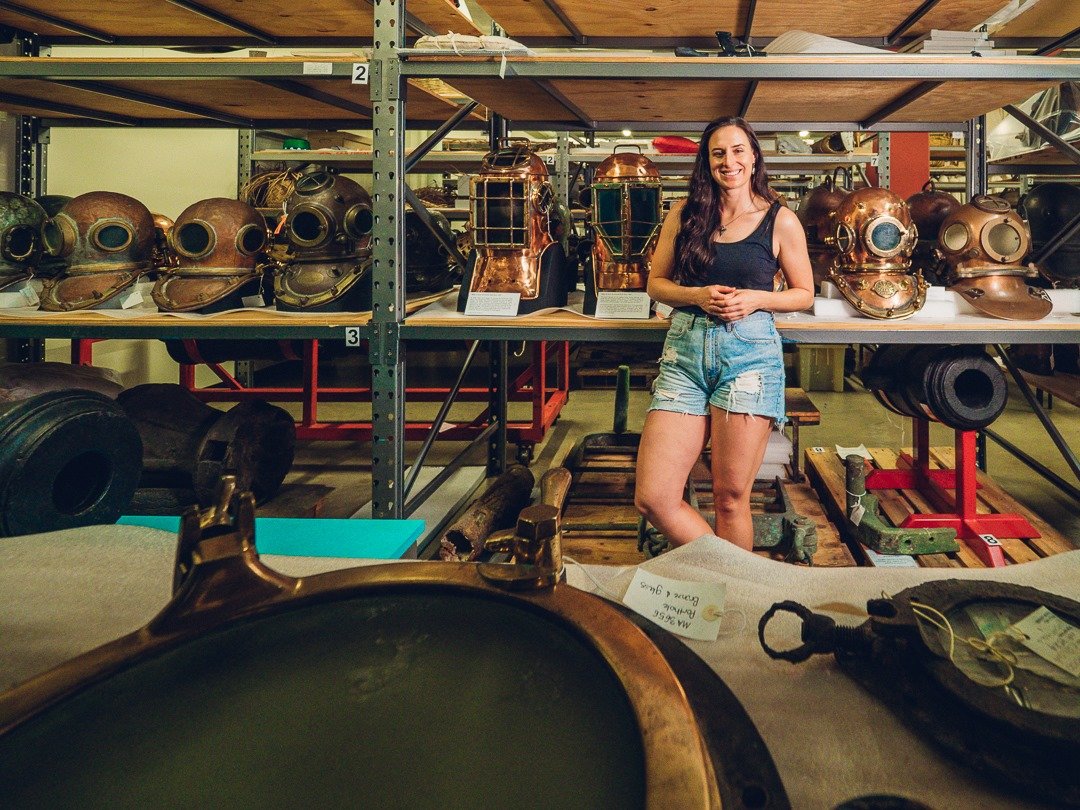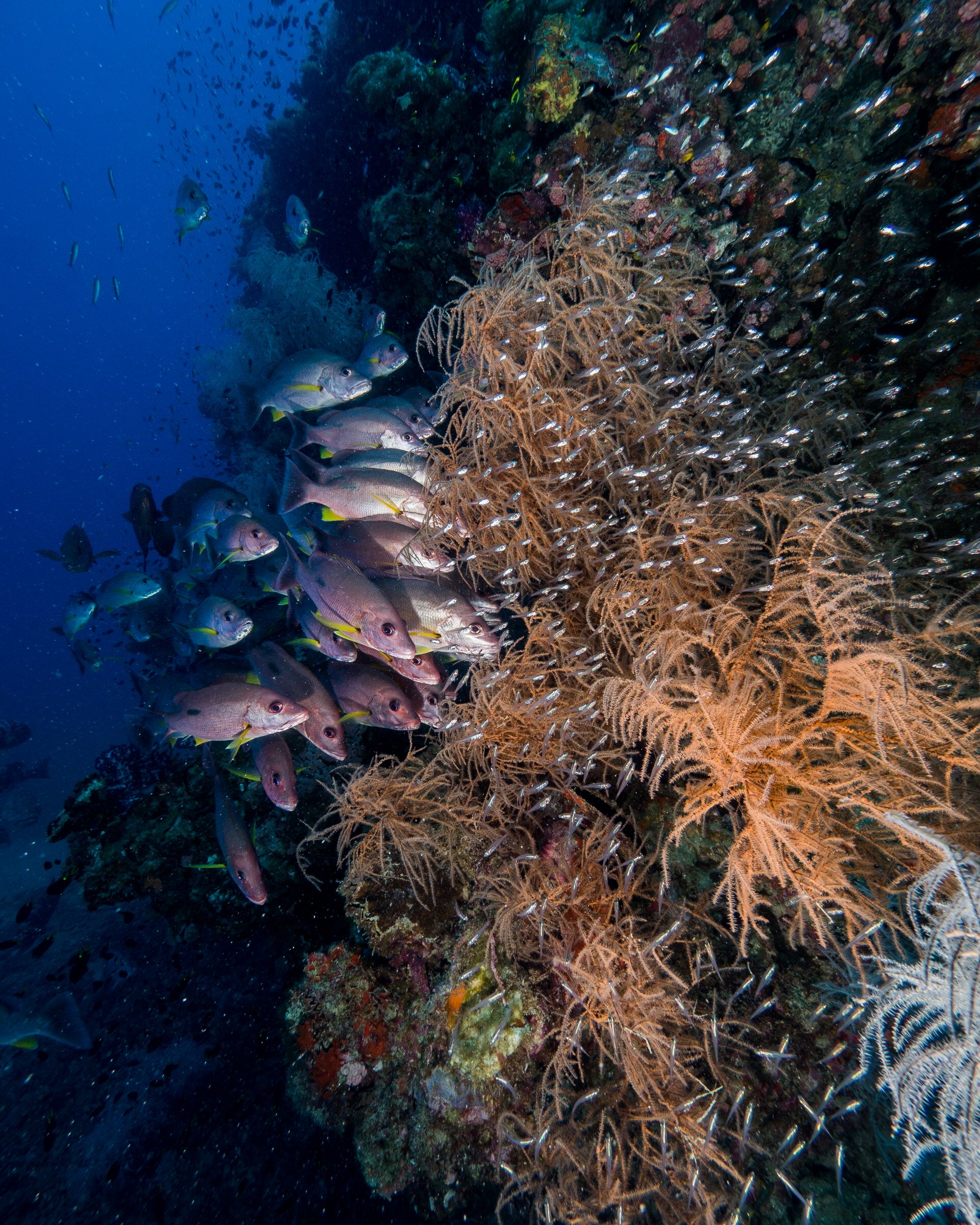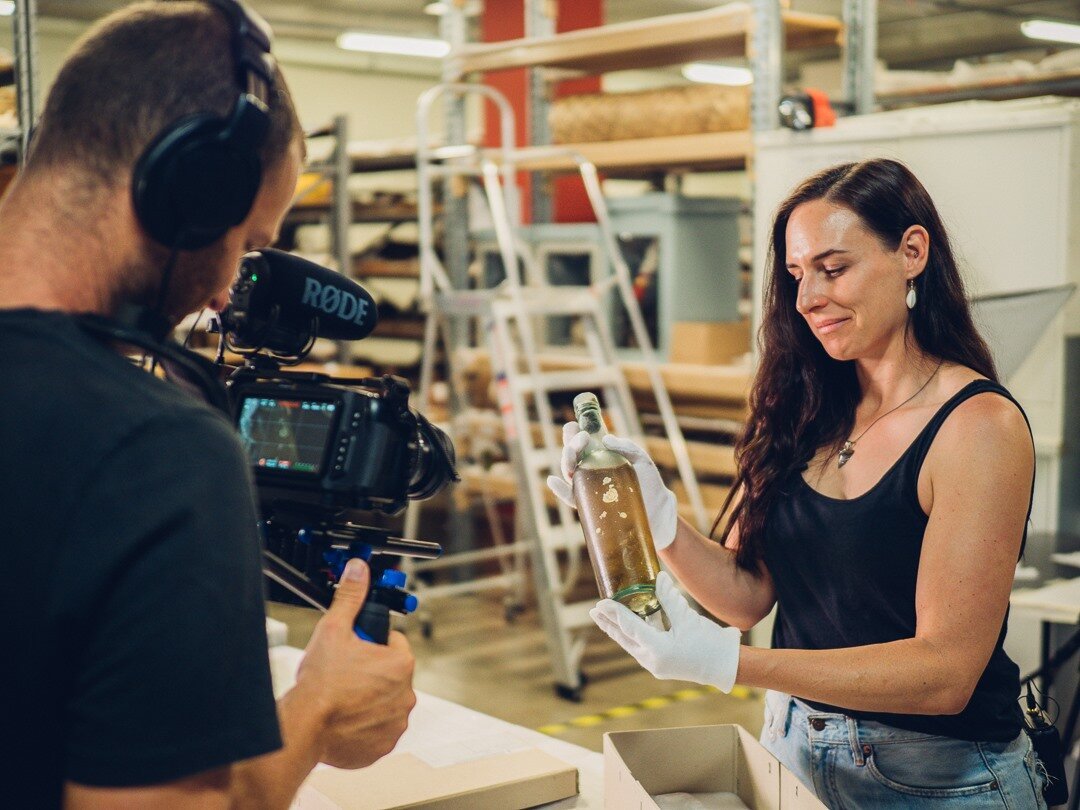
Dr Maddy McAllister
Meet The Shipwreck Mermaid, otherwise known as Maddy McAllister.
Maddy is a maritime archeologist, so she is kind of like the female, under-the-sea version of Indiana Jones. Except, instead of searching for buried treasure on sunken ships, Maddy is much more interested in preserving artefacts found on wrecks, so that the stories about the people they once belonged to can continue to be told.
Maddy grew up in a tiny little coastal town in the southwest of Western Australia. Maddy decided she was going to become a maritime archeologist after she dragged her mum to a lecture on shipwrecks at her local RSL club
“We walked into this room to hear a lecture from Ross Anderson, who’s still a curator at the Fremantle Museum, and we were the only people under the age of 75”. Anderson gave a talk about the shipwrecks littering the West Australian coastline, and Maddy was so enthralled that she marched straight up to Anderson after the lecture and asked him how she could do the same thing he did.
Maddy is a firm believer in following whatever ignites your passion and has clear memories of being told that if she opted for a career in maritime archeology she would never get a job, never make any money and that it was a terrible choice. Maddy says that with support from her mum, she instead “followed my heart and went on to study underwater archaeology, and here I am today.”
What was your first scuba dive on a shipwreck like?
I talked my dad into doing an ‘introduction to maritime archaeology’ course at the Fremantle Museum. We went out to Rottnest Island off Perth, which has about twelve shipwrecks around it. We dived on this little early 20th-century shipwreck sitting amongst Reef.
I remember looking at this shipwreck, and knowing a little of the history of it and then being able to see it in real life. I think there is something about reading about a shipwreck and then diving it that makes it a really amazing experience.
Tell me about your research
I’ve been working in this field for ten years, and I look at how wooden ships were built and try to understand the parts that you see sprawled across the seafloor. I really love playing detective on a shipwreck site and identifying bits and pieces.
I have a real fascination with humans and the way we have evolved to build these incredible machines that sailed across the ocean. I like putting those pieces back together. The other thing that I really love about what I do, and one of my core research aspects is 3D modelling of underwater shipwreck sites.
I think that most people need to see things in a third dimension to understand their scale. For me, it is not just about research, but public outreach. Having a 3D digital model of a shipwreck is a fantastic tool to educate people.

Are maritime archaeologists the same thing as treasure hunters?
There's an interesting issue in the world that the most exciting part of shipwrecks seems to be treasure, and that's heightened by movies and Hollywood. The problem for us is that treasure hunters aren't archaeologists. They simply go down to find whatever they can make money off, and that often involves completely destroying a site without recording it.
For human history and our cultural heritage, treasure hunters actually destroy it to make money off it. While they keep some of the beautiful gold, treasures and coins, they ignore some of the really important bits that tell the human side of the story.
Is treasure hunting still a problem?
Treasure hunting on a large scale is still a problem around the world, certainly in countries that may not have the same protection of their shipwrecks that Australia does here.
Our problem is the lack of education of divers and people who are interested in things and pick things up off shipwrecks as souvenirs. Not necessarily because they want to sell them, but because they don't know that they are protected and they think they found something cool, that they can take home and show their family. I think it's more our message about the protection of shipwrecks and the damage that people can do by removing a bottle or brick from a site.
So, you are kind of like a good treasure hunter?
I try to convey that maritime archaeology is just as exciting as it is portrayed in the movies.
We hunt for months and years for shipwrecks, find them and study them. We also spend a lot of our time putting all of that information and data together and publishing it so that the community learns from it, and learns about their own cultural heritage.
It's certainly exciting to be a maritime archaeologist. I wouldn't do this job without being able to be on a boat and in the water and actually doing the work. At the same time, there's a lot of days spent in the lab and in the storeroom working on the objects.
Tell me about some of your favourite objects
I really like ‘boring’ objects rather than what you’d imagine as treasure. My absolute favorite object is a giant tap from the laundry that was pulled off the Yongala shipwreck in the 1970s. It's like a tap you have in your house today, just ten times the size. I love that it has come off a shipwreck that is essentially Australia's Titanic.
My other favourite objects on shipwrecks are wood, materials and ropes. Some of the objects from Pandora, which sank in 1791, like coils of rope from the rigging that were preserved for hundreds of years underwater, were able to be lifted and preserved as they are. I like seeing that, it reminds me that shipwrecks can save things underwater for us for many years to come.
What is ‘Australia's Titanic’?
We call the SS Yongala shipwreck Australia’s Titanic. I think everyone loves a shipwreck story like Yongala because of the mystery that surrounds it. It sank in 1911, and it was one of Australia's most famous shipwrecks. This vessel, Yongala, used to operate up and down the coastline really regularly. It was well known, a lot of people had travelled on it.
Then one day in March, it left Mackay and disappeared with 122 people on board, never to be seen again. No one was ever found, until the late 1950s when divers investigated a potential shipwreck site there and finally found what happened to the Yongala.
We now know that it most likely hit a full-frontal cyclone, without warning, in the middle of the night and sank between the reef and the land with everyone on board.
The story of Yongala is haunting. It's a large ship. When you dive on it, it's about 100 metres long. It portrays this picture of what you would hope you could dive on the Titanic, but you can actually do it on Yongala. It still has some of those reminders of the tragic loss of human life, things that you recognise without knowing a lot about ships. You can picture yourself travelling on a ship like this and what they must have gone through, in the early hours of the morning when it sank.
Yongala is a unique site not just for its history and its heritage, but because it has created a wonderful oasis for marine life, which means that it's become one of Australia's most popular and famous dive sites as well.
It's fascinating for me that a shipwreck, something man-made that was a tragic accident, can actually become such a wonderful place to watch grow and evolve over time.








































































